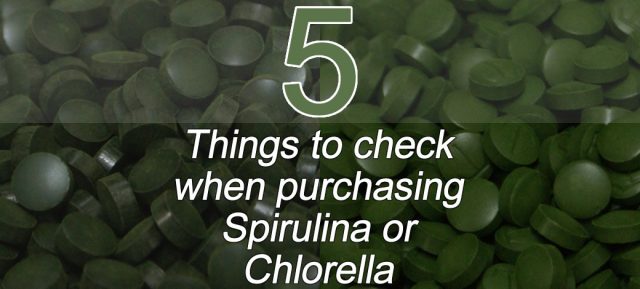
Spirulina and chlorella are both extremely nutritious whole foods, and consuming them may seem like a straight forward process. It’s just a case of picking up a pack at your local health food store or online shop, and everything’s OK, right?
Unfortunately, it’s not quite so simple. Both spirulina and chlorella are complicated to culture, grow and harvest, and are especially difficult to keep free of contaminants in order to be safe for human consumption.
The most common types of contaminants are heavy metals absorbed by the produce in the growing stage, as well as other strains of algae or bacteria that grow alongside it – that are then harvested and processed along with it. These can be toxic to humans and need to be regularly tested for.
Secondary contaminants are foreign objects that make their way into the produce.
An example of a contaminated algae product that was tested by the FDA in the USA contained adult flies and adult fly fragments, maggots and maggot fragments, ants and ant fragments, cicada and cicada fragments, hundreds of other insect fragments, ticks, mites, ostracods, rat or mouse hairs, bird feathers, and water fleas.
There is also a misconception that products labelled as “organic”, must be safe to eat. Unfortunately organic certification doesn’t test for these heavy metals, other strains of algae, bacteria, or foreign objects.
We’ve put together a list of 5 things to check before purchasing or consuming any spirulina or chlorella product. These can also be applied to other food supplements:
1. What are the ingredients?
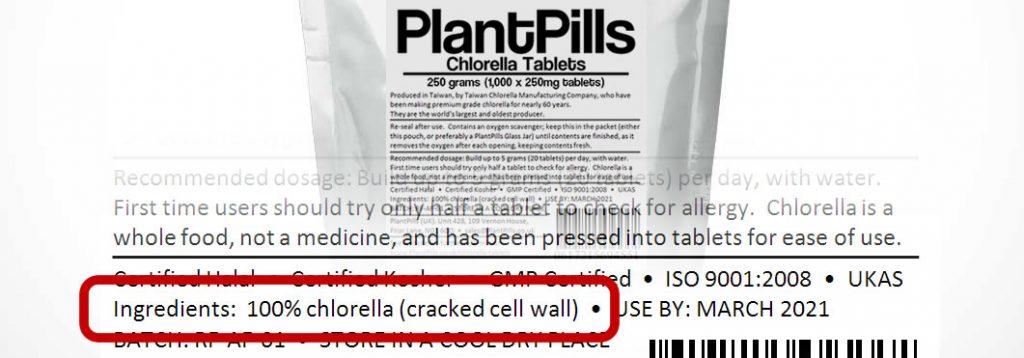 It’s important to check the ingredients or contents of the product. We supply both spirulina and chlorella in tablet form, for ease of use. These tablets are simply the whole produce pressed into tablets, there are no fillers, binders or excipients added, and nothing is taken away.
It’s important to check the ingredients or contents of the product. We supply both spirulina and chlorella in tablet form, for ease of use. These tablets are simply the whole produce pressed into tablets, there are no fillers, binders or excipients added, and nothing is taken away.
The contents of our spirulina tablets is simply 100% whole spirulina, and likewise the contents of our chlorella tablets is simply 100% whole chlorella (cracked cell wall, strain: Chlorella Pyrenoidosa).
When taking a food supplement, you are making a conscious decision to add the produce to your diet. But if there is anything else on the ingredients list, you are also committing to consume that alongside the produce on a regular basis.
Many fillers, binders and excipients are included for ease of processing at the factory, not for human health, and are certainly not whole foods.
It is important to check the ingredients or contents section of any food supplement. If you decide that you are happy to regularly consume a controversial ingredient like magnesium stearate on a regular basis, at least you have formed that opinion after making yourself aware of the ingredients.
2. Who is the producer or grower?
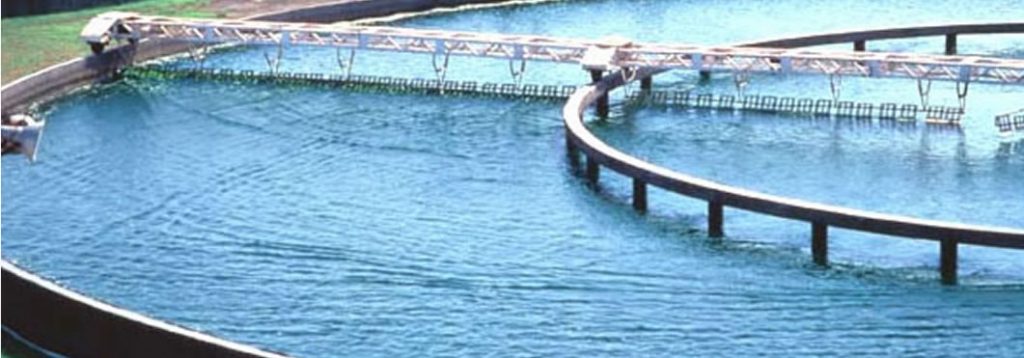 It’s important to know who the producer is, because spirulina and chlorella are so difficult to grow and process, especially contaminant free and safe for human consumption.
It’s important to know who the producer is, because spirulina and chlorella are so difficult to grow and process, especially contaminant free and safe for human consumption.
Ideally you’d like to know where they are located, how long they have been producing it for, what kind of certifications they have, and what standards they are held to.
In general, it’s good if the producer has been operating for more than 20 years – they should have the experience of anything that could go wrong, and the knowledge of how to prevent it.
A long standing producer should also know how to make the best quality produce possible.
For example, PlantPills Spirulina is grown for us in Tamil Nadu, southern India, by Parry Nutraceuticals, who are part of the Murugappa Group conglomerate.
They have been making high quality spirulina for over 30 years, and are acknowledged to be among the very best producers in the world. They are USP verified, hold various ISO and GMP certificates, as well as being certified Halal and Kosher.
PlantPills Chlorella is grown for us in Taiwan, by Taiwan Chlorella Manufacturing Company (TCMC).
They are the world’s largest and oldest producer, making high quality chlorella for nearly 60 years.
They hold various UKAS, ISO and GMP certificates, and are also certified Halal and Kosher.
If a shop or supplier of a spirulina or chlorella product doesn’t tell you who produced or grew the produce, it is very suspicious and a huge red flag for anyone considering consuming it.
3. Independent third party lab tests
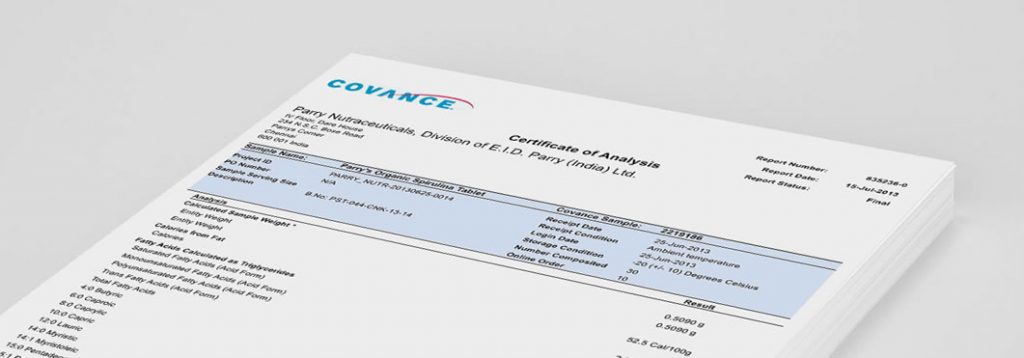 Both spirulina and chlorella are extremely nutritious whole foods, containing high protein, chlorophyll, fatty acids and various vitamins and minerals.
Both spirulina and chlorella are extremely nutritious whole foods, containing high protein, chlorophyll, fatty acids and various vitamins and minerals.
It’s easy to make claims about the nutritional content of a spirulina or chlorella product, but without independent third party laboratory testing to back them up, any details or stats could just be guessed or made-up numbers.
In addition to confirming the nutritional content, independent third party lab tests are important to ensure that the produce is meeting standards for contaminants and bacteria, and is generally safe and non-toxic for human consumption.
In-house testing or testing by anyone who could be affiliated with either the grower or the vendor should not be considered as independent.
For example, we (PlantPills) are located in the UK, our spirulina is grown in India (by Parry), and third party lab tests are performed in USA by Covance Inc.
For our chlorella, again we are located in the UK, our chlorella is grown in Taiwan (by TCMC), and third party lab tests are performed in Japan by Japan Food Research Laboratories.
If a shop or supplier of a spirulina or chlorella product can’t provide independent third party laboratory tests to confirm nutritional content and safety, it is suspicious and a red flag for anyone considering consuming it.
4. The certificate of analysis (CoA) for the batch
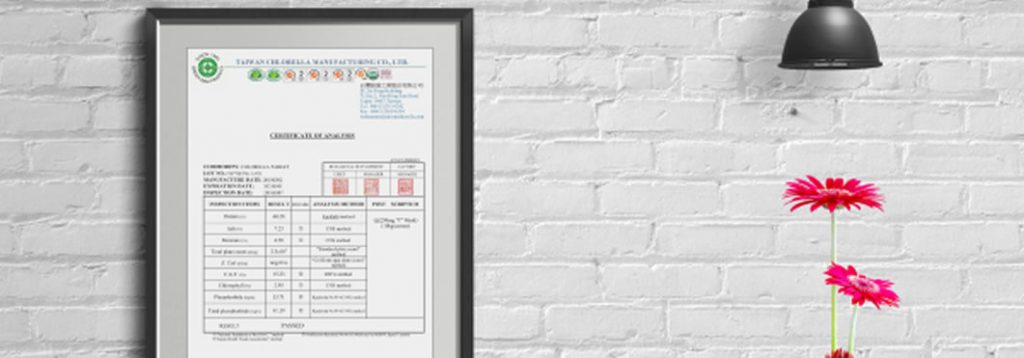 Each batch of spirulina or chlorella that any producer makes should have a certificate of analysis to accompany it.
Each batch of spirulina or chlorella that any producer makes should have a certificate of analysis to accompany it.
This will have the name and address of the producer, the date of manufacture, the date of expiry, and various nutritional and safety related items tested for. The testing methods for each one of these should be detailed, and the signatures or stamps of everyone involved in the testing process should be present.
By nature, this is completed in-house, and should be combined with independent third party laboratory tests to build up a full picture of the quality and trustworthiness of the produce.
We publish the latest CoAs and independent laboratory testing results on the relevant spirulina and chlorella pages of our site.
Again, if a shop or supplier of a spirulina or chlorella product can’t provide the CoA for the batch that the product is part of (in order to confirm basic nutritional content and safety), it is suspicious and a red flag for anyone considering consuming it.
5. Quality of the packaging
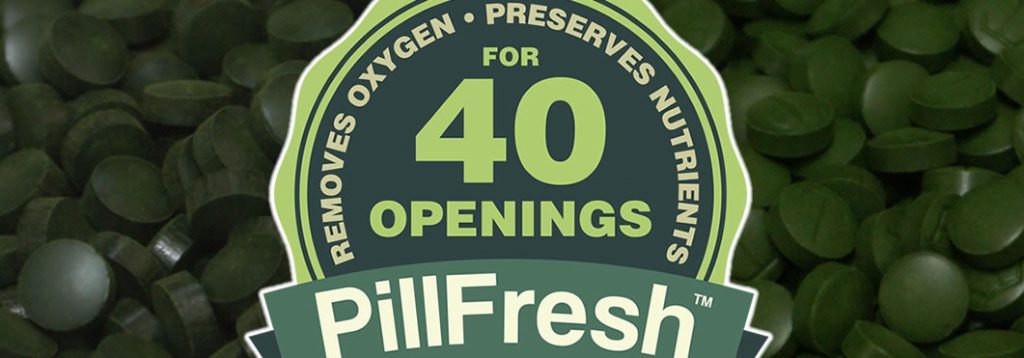 Packaging is an often neglected part of food supplements, especially for spirulina and chlorella.
Packaging is an often neglected part of food supplements, especially for spirulina and chlorella.
It is imperative that spirulina and chlorella is transported and stored in an oxygen-free environment, even after opening. If spirulina or chlorella is exposed to oxygen, the nutritional value quickly starts to diminish, because vitamins, enzymes and antioxidants are particularly sensitive to oxygen.
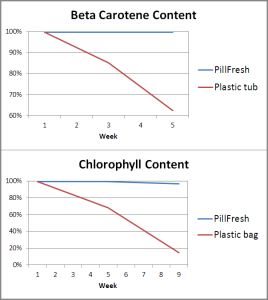 Spirulina or chlorella tablets are typically packaged in plastic tubs, or “vacuum sealed” Mylar aluminium pouches. Mylar pouches are preferable, as plastic tubs are permeable to oxygen, so are no good for keeping this type of produce fresh.
Spirulina or chlorella tablets are typically packaged in plastic tubs, or “vacuum sealed” Mylar aluminium pouches. Mylar pouches are preferable, as plastic tubs are permeable to oxygen, so are no good for keeping this type of produce fresh.
However, tablets in aluminium pouches are difficult to vacuum seal, and this type of vacuum sealing typically contains at least 2% oxygen. This is enough oxygen to start diminishing the nutritional value, and considering mould can grow in air with a 0.3% oxygen content, this really isn’t acceptable.
A significant amount of nutrition is lost before a typical package of spirulina or chlorella is even opened by the consumer. Then, after opening, the exposure to oxygen quickly starts to diminish the nutritional value further.
Typical packaging will result in a 37% loss in beta carotene content after four weeks, and an 85% loss in chlorophyll content after 8 weeks.
PlantPills products maintain 100% (or very close to 100%) of the nutrients, with our unique PillFresh packaging removing oxygen to a content of less than 0.1%.
It then continues to remove the oxygen after each time the pack is opened, for 40 openings.
Our innovative packaging is unmatched and exclusive to PlantPills.
To summarise…
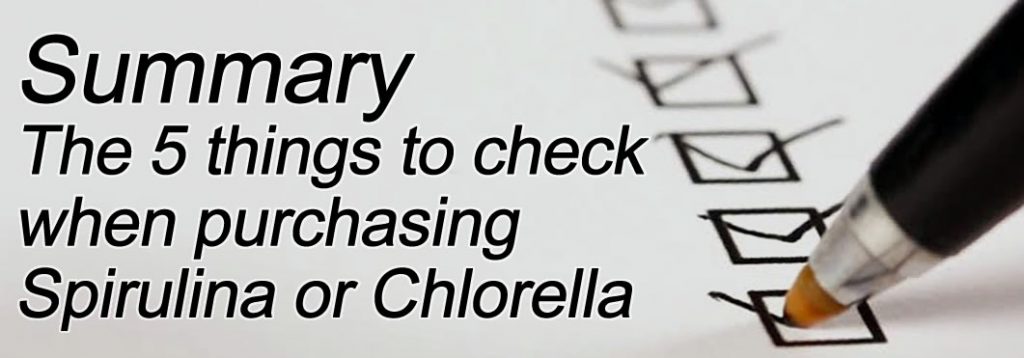 When purchasing or consuming spirulina or chlorella, be sure to:
When purchasing or consuming spirulina or chlorella, be sure to:
- Check the ingredients for anything that isn’t the produce
- Check who the producer or grower is, where they are, and how long they have been operating
- Ask to see independent third-party tests to verify nutritional content and safety
- Ask to see the certificate of analysis (CoA) for the batch
- Check the quality of the packaging
If you found this article useful or have any questions, please share it, leave a comment or contact us.
The PlantPills Spirulina mentioned in this article can be found here, and PlantPills Chlorella can be found here.
Published on: Jun 15, 2018


